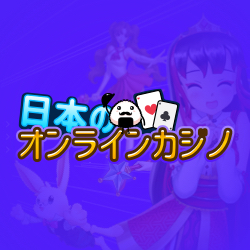Shadow of the Colossus PS2 Review
Despite being wrongly called ICO 2 (not that it would be much of an accusation, given the quality of that game), Shadow of the Colossus has very little in common with ICO. The Director and lead designer, Fumito Ueda, did admit that both games are set in the same world, although whereas ICO was quite a tranquil experience for a large part, Colossus involves scaling skyscraper sized monsters and stabbing them where it hurts.
The game is tainted in sadness right from the off. Wander, the protagonist of the story, is riding his horse and carrying the body of his dead lover, in which he lays to rest on top of an altar. Wander hopes to resurrect his loved one and is given the opportunity if he is to slay 16 monsters and whatever the cost, he goes ahead in his attempt to do so. It’s an interesting premise and whilst it doesn’t get anymore exciting than this until Wander stabs his sword into the final colossus for the last time, at least it gives you some motivation and a reason (if you really must have one) for risking life and limb (and perhaps a couple of teeth) to topple enormous monsters.
Much like ICO, Shadow of the Colossus has a very lonely feel, with only the wind and the occasional wildlife for company, oh and Agro. Agro is Wander’s trusty horse, who will take his rider through thick and thin in order for him to accomplish this most dangerous of quests. You’ll be seeking out Colossus’ whilst sitting on your loyal and beautifully animated steed and like Yorda of ICO, Agro can be called to your side, in which he’ll normally oblige without too many problems.
Basically the repeating routine goes like this: you are given a clue to the whereabouts of the current colossus, you rush off on the back of Agro and raise your sword towards the sky. This heroic stance results in a godly guiding light shining from the tip of the blade, steering you towards your next giant target if sensibly followed. It’s certainly a more interesting way of doing things then using satellite navigation I‘ll give it that, although perhaps some combat, in-between searching and finding the colossus‘, would have benefited the game. Then again these quiet and lonely moments do come as a welcome break in times when you aren’t gripping the fur of a colossus and being tossed around like a mere rag doll as you hold on for dear life.
Finding the colossus’ can be rather difficult which may be shocking due to their overall towering size, although they’re not always readily visible until you reach their location, in which they’ll show themselves in a suitably grand manner. On the whole the colossus’ are memorable in their designs and I certainly didn’t feel that they were the generic kind that I have shot and sliced up countless times in many other games that feature hostile and oversized creatures. What’s more is that all 16 are like boss battles and remarkably these are the only foes you’ll face off against.
Upon discovering these monsters you’ll then have to seek out their weak spots, and as Wander possesses a sword straight from the off (unlike poor Ico, who only had a plank of wood, for his and Yorda’s protection, to begin with) you’re able to puncture their weak spots with a violent swing of the arm. As things so often go it’s very convenient for the enemy although highly inconvenient for yourself, with vulnerable areas being regularly located at high areas of their bodies, and Wander may be courageous and all that but he just doesn’t come anywhere close to comparing to the size of the majority of these beasts. You’ll have to improvise for Wander’s inadequate height by devising a plan and finding a way onto their bodies without the aid of a very big ladder or a crane, this results in you clinging onto any fur you can find, climbing the platforms that are curiously placed on their bodies and keeping your eye on the grip meter, as the potential drop is never particularly appealing. Glowing symbols on each colossus’ body indicate where you should stab them, and whilst some only have the one weak spot to reach and attack others have more.
Finding and/or getting to a weak spot is often difficult and you’ll have to attempt everything in order to slay those giants. Helpfully, if you aren’t making headway in any one of the 16 fights you are given advice, unfortunately much of this advice is overly cryptic so sometimes it isn’t actually very helpful at all.
The game must be using 110% of the PS2’s power, such is its beauty, with the size and the quality of those monsters as well as the exquisite animations. Like ICO, Shadow of the Colossus seems a little shy of bright colours, but Team ICO have definitely created a distinctive graphical look for both of their games. Even three years after its release Shadow of the Colossus is still quite a beauty, even next to games that have been released for the Xbox 360 and the PS3, this is almost enough for me to forgive its slightly dodgy camera, draw distance and its infrequent framerate issues. It also sounds great as well, with dramatic music accompanying the struggles with each colossus, whilst for the remainder of the time Agro‘s thundering hooves are some of the few things that rid the complete sense of loneliness of this lovely game world.
Shadow of the Colossus is a grand game then and like ICO it has few real problems to speak of. I do feel that better use could have been made of the rich game world, with perhaps a few side quests to extend the lifespan (the game does have a time attack and a hard mode), although you’ll still be covering much ground on the back of Agro as you seek out the colossus’. I can only wonder what Team ICO have planned for the PS3, although hopefully it will be something as equally special as Shadow of the Colossus and ICO.
9/10







